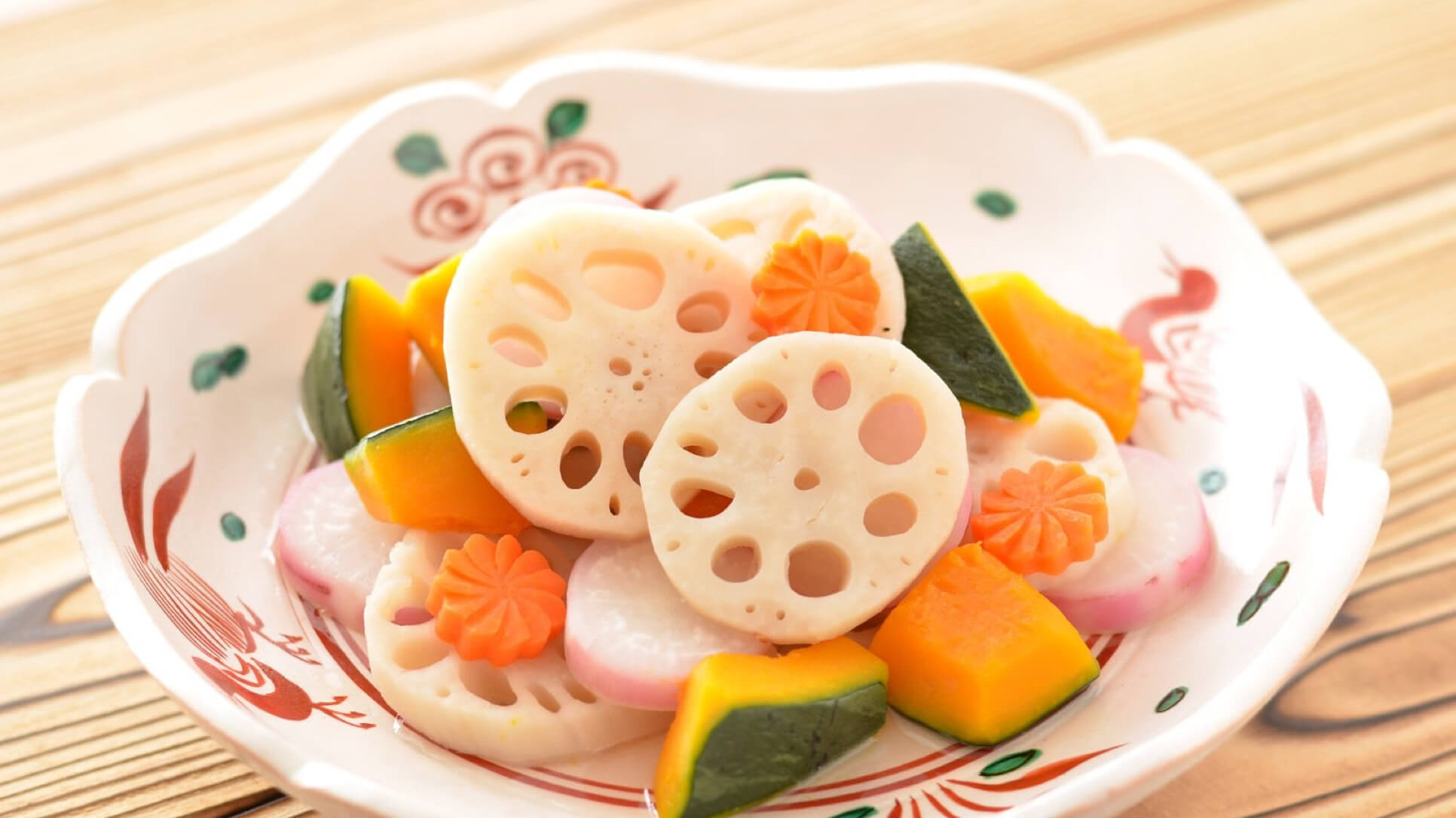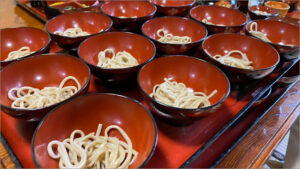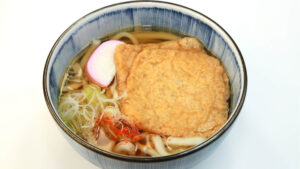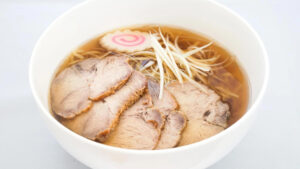Japanese home-cooked classic nimono is a dish in which seasonal ingredients are slowly simmered in dashi stock and seasonings, allowing you to enjoy the natural umami and gentle flavors of the ingredients. It uses little oil and offers excellent nutritional balance, which is why it has been loved by people of all ages—from children to the elderly. In this article, we’ll clearly introduce the key points for basic seasoning of nimono, three classic recipes, seasonal variations, and handy tips and Q&A to make your simmered dishes even more delicious.
Contents
What Is Japanese Home-Cooked “Nimono”? Its Characteristics and Appeal
Nimono, a quintessential Japanese home-cooked dish, uses a simple technique of slowly simmering ingredients in dashi stock and seasonings. By infusing meat, fish, and seasonal vegetables with gentle flavors, it produces a comforting, soothing taste. Nimono offers the following major appeals:
Why Nimono Is Loved in Japan
Nimono has long been an indispensable part of the Japanese dining table, and there are many reasons for its enduring popularity.
Body-Friendly Flavor
Simmering ingredients in light dashi, soy sauce, and mirin brings out their natural umami without relying on heavy oils. Using nutrient-rich ingredients like vegetables, mushrooms, seafood, and tofu makes nimono a balanced, everyday dish that can be enjoyed safely by everyone from children to the elderly.
Enjoying Seasonal Flavors
Nimono celebrates the seasons: tender bamboo shoots in spring, juicy eggplant and okra in summer, earthy mushrooms and taro in autumn, and hearty daikon and root vegetables in winter. This allows you to experience the changing colors, aromas, and textures of each season right at your dinner table.
Family-Specific Diverse Recipes
The flavor of nimono can vary widely based on how you prepare the dashi, which type of soy sauce you choose, or the ratio of sugar and mirin. Every household has its own “mom’s recipe”—even classic nikujaga (meat and potato stew) tastes different from one family to another. The slow simmering process often becomes a time for warm family conversations as well.
Key Seasonings Used in Nimono
The deliciousness of nimono relies on its fundamental seasonings, starting with dashi stock. In particular, the balance of the “four major seasonings”—soy sauce, mirin, sugar, and sake—greatly influences the flavor of the simmering liquid. Here, we introduce the characteristics and uses of three essential seasonings for nimono.
The Role of Soy Sauce
Soy sauce is the cornerstone seasoning that adds color and depth to nimono. There are two main types: “koikuchi” (dark) soy sauce, which provides a rich color and deep umami, and “usukuchi” (light) soy sauce, which offers saltiness without darkening the ingredients. Use usukuchi to preserve the natural hues of your ingredients, and koikuchi when you want a more pronounced flavor. Adding soy sauce at the end of cooking helps retain its aroma and vivid taste.
Sweetness and Gloss from Mirin
Mirin, a rice-based sweet seasoning, imparts a natural sweetness and beautiful sheen to the simmering liquid. Its refined sweetness is more elegant than sugar, giving nimono a mellow richness. When added at the start of simmering, the alcohol evaporates and the sweetness penetrates the ingredients. A small additional splash at the end brings out an appetizing gloss that enhances presentation.
The Importance of Dashi Stock
Dashi stock is the flavor foundation of nimono. A carefully prepared ichiban dashi—made from kombu kelp, katsuobushi (bonito flakes), or niboshi (dried sardines)—enhances the natural umami of ingredients, then synergizes with soy sauce and mirin to create deep, layered tastes. If using instant dashi granules, fully dissolve them before adding other seasonings to achieve a rich flavor. Adjusting the concentration of your dashi allows you to control the depth of taste in the same recipe.
Basic Techniques for Cooking Nimono
From ingredient prep to heat control and flavor infusion tips, here are the key points for making delicious nimono.
Preparing the Ingredients
For nimono, the way you cut and parboil ingredients greatly affects the final result. Cut vegetables into uniform pieces to ensure even cooking. Peel and briefly parboil taro or potatoes to remove excess starch and prevent them from breaking apart. For fish or meat, rinse under cold water, pat dry to remove blood and excess fat, then season lightly with sake or salt to reduce any fishiness or impurities.
Heat Control Tips
Start by bringing the cooking liquid to a rapid boil over high heat, then reduce to medium–low heat for a slow simmer. The initial high heat helps the seasonings adhere to the ingredients quickly; once boiling, skim off any scum and lower the heat to gently simmer, yielding tender, evenly cooked ingredients. Avoid maintaining too high a heat, as this can overcook the surface while leaving the interior underdone.
Tips for Infusing Flavors
Nimono continues to absorb flavor even as it cools. After cooking, turn off the heat and leave the pot covered for about 10 minutes to allow the seasonings to penetrate to the center. If you plan to eat leftovers the next day, let the nimono cool completely, refrigerate, then reheat gently over low heat before serving—the flavors will deepen further. Use just enough liquid to cover about half the ingredients so that the natural juices don’t dilute the seasoning, helping maintain balanced flavor.
Three Classic Nimono Recipes
Here are three time-honored simmered dishes loved in Japanese homes. First up: nikujaga, a popular stew where sweet-savory broth soaks into tender potatoes.
Nikujaga (Beef and Potato Stew)
Ingredients & Prep
- Potatoes (medium-large) … 2–3, peeled and cut into 4–6 wedges, then soaked in water to remove excess starch
- Thinly sliced beef … 200 g, cut into bite-sized pieces
- Onion … 1 medium, cut into wedges
- Carrot … ½, cut into chunky slices
- Shirataki noodles … 1 pack, parboiled and cut into bite-sized lengths
- Vegetable oil … 1 tbsp
Seasoning A: Dashi stock 300 ml, Soy sauce 2 tbsp, Mirin 2 tbsp, Sugar 1 tbsp
Prep: Drain potatoes after soaking. Parboil shirataki briefly to remove any bitterness.
Cooking Steps
- Heat oil in a pot and sauté onion over medium until translucent.
- Add beef and cook until no longer pink.
- Add carrot, potato, and shirataki; stir to coat with oil.
- Pour in Seasoning A. When it boils, skim off scum, reduce to medium heat, cover with a drop lid.
- Simmer about 15 minutes, until a skewer slides through ingredients easily.
- Remove lid, lower heat, and simmer 3–5 more minutes until the broth glazes the ingredients.
Recipe Variations
- Pork Version: Use thinly sliced pork belly instead of beef for extra richness.
- Tomato Nikujaga: Replace half the dashi with 200 g canned tomatoes and a pinch of consommé for a Western twist.
- Extra Shirataki: Double the shirataki for a lighter, more textural dish.
- Cheese Topping: Top with melting cheese, cover until melted, and serve as a fusion appetizer.
Chikuzen-ni (Simmered Chicken and Root Vegetables)
Chikuzen-ni is a traditional dish from the Chikuzen region (modern-day Fukuoka) featuring chicken and colorful root vegetables simmered in a sweet-savory broth. It appears in osechi (New Year’s dishes) and celebratory meals, with variations in ingredients and seasoning by household and region.
Ingredients & Prep
- Chicken thigh … 200 g, cut into bite-sized pieces and lightly salted
- Burdock root … 1 stalk, scraped, thinly sliced on the diagonal, then soaked in water to remove bitterness
- Carrot … ½, cut into chunks
- Taro … 3–4, peeled and halved or quartered, parboiled to remove slime
- Konnyaku … ½ block, cut into strips and blanched to remove bitterness
- Shiitake mushrooms … 3–4, stems removed, sliced or decorative cuts
- Sugar snap peas … a handful, blanched, cooled, and drained (for garnish)
- Vegetable oil … 1 tbsp
Seasoning A: Dashi 300 ml, Soy sauce 2 tbsp, Mirin 2 tbsp, Sake 1 tbsp, Sugar 1 tbsp
Cooking Steps
- Heat oil in a pot and sauté chicken skin-side down over medium heat until browned.
- Add burdock, carrot, taro, and konnyaku; stir to coat with oil.
- Add shiitake; when fragrant, pour in Seasoning A.
- Once boiling, skim off any scum, cover with a drop-lid, and simmer over medium-low for 15–20 minutes.
- Remove the drop-lid, simmer on low until the broth glazes the ingredients, then turn off the heat.
Plating Tips
- Use a deep, Japanese-style bowl or plate, leaving a little broth around the edges for a beautiful presentation.
- Scatter sugar snap peas on top for a pop of green color.
- Arrange burdock and carrot so their cut surfaces face upward to showcase texture and color contrast.
- Garnish with thinly sliced yuzu peel or julienned ginger for an aromatic, festive finish.
Buri Daikon (Simmered Yellowtail and Daikon)
Buri Daikon is a classic winter nimono featuring fatty yellowtail and tender daikon radish simmered in a sweet-savory broth that pairs perfectly with rice.
Ingredients & Prep
- Daikon radish … ½, peeled thickly and cut into 2 cm rounds or half-moons, parboiled in rice-rinsing water (or water with a spoonful of rice) to remove bitterness
- Yellowtail fillets … 2, blanched with boiling water to remove excess fat and odor, then patted dry
- Ginger … 1 knob, thinly sliced or julienned
- Green onions … as needed, thinly sliced for garnish
- Vegetable oil … 1 tbsp
Seasoning A: Dashi 300 ml, Soy sauce 2 tbsp, Mirin 2 tbsp, Sake 2 tbsp, Sugar 1 tbsp
Cooking Steps
- Drain the parboiled daikon and lightly brown the pieces in oil over medium heat.
- Pleat daikon to one side of the pot, add yellowtail skin-side down, and sear until lightly colored; then return daikon.
- Add ginger and Seasoning A; once boiling, skim off any scum.
- Cover with a drop lid and simmer on low for about 15 minutes until daikon is tender and flavored.
- Remove the lid, increase heat to medium, and cook 2–3 more minutes until the broth thickens and glazes the ingredients.
Tips for Perfect Finish
- Parboil daikon: Using rice-rinsing water removes harshness and allows a clearer, deeper flavor.
- Deodorize yellowtail: Blanching or lightly salting and resting for 10 minutes reduces fishiness.
- Use residual heat: After cooking, leave the covered pot off the heat for 10 minutes so flavors penetrate fully.
- Garnish creatively: Sprinkle sliced green onions or shichimi pepper for a pop of color and aroma.
Seasonal Nimono Recipes
Spring Simmered Dish (Bamboo Shoots and Chicken)
As spring arrives, fresh bamboo shoots—a quintessential mountain vegetable—begin to appear at markets. This simmered dish combines bamboo shoots with chicken to fully enjoy the flavors of spring.
How to Choose Fresh Bamboo Shoots
- Firm, Moist Outer Husk: Look for shoots with a glossy green or brown outer layer that feel springy to the touch.
- No Damage or Holes: Press gently at the base; it should not dent, indicating a solid interior.
- Moderate Thickness: Shoots about the size of a fist cook evenly—too thick takes longer to cook, and too thin lacks substance.
- Canned Shoots: Rinse well to remove excess salt or preservatives before use for a more natural flavor.
Delicious Cooking Steps
- Prepare Bamboo Shoots: For fresh shoots, peel and boil in water with rice bran and a small dried chili, then drain and cool. For canned shoots, drain and cut into bite-sized pieces.
- Season Chicken: Cut 200 g of chicken thigh into bite-sized pieces, rub with a pinch of salt and a splash of sake, and let rest for 10 minutes.
- Sear Chicken: Heat 1 tbsp of oil in a pot over medium heat and brown the chicken skin-side down until golden.
- Add Vegetables: Add bamboo shoots, reserving a few thin carrot slices for garnish, and pre-blanched, drained rape blossoms (nanohana). Quickly stir to combine.
- Add Seasonings: Pour in 300 ml dashi stock, 1.5 tbsp soy sauce, 1 tbsp mirin, and 1 tsp sugar. Bring to a boil and skim off any scum.
- Simmer: Cover with a drop lid and simmer gently for about 10 minutes. Return the reserved carrot slices and rape blossoms, simmer briefly to warm, then serve.
Storage Methods & Shelf Life
- Cool Down: After cooking, turn off the heat and cover the pot. Let it rest for about 30 minutes to allow flavors to meld as it cools.
- Refrigerate: Transfer the nimono and its broth into a clean, airtight container. Store in the refrigerator for 2–3 days.
- Reheating Tips: Older nimono may taste stronger. To refresh, place in a serving dish, add a splash of water or dashi, and gently reheat over low heat for a tender finish.
- Freezing Option: For longer storage, portion into freezer-safe bags with broth and freeze. Use within one month. Thaw and reheat directly—no need to drain the broth for best flavor.
Summer Simmered Dish (Eggplant and Bell Pepper Simmered in Broth)
A refreshing dish perfect for hot weather. Simply sear eggplant and bell pepper in a bit of oil until lightly browned, then chill them in a flavorful dashi-based broth.
Tips to Enhance Summer Vegetable Flavor
- Oil-Blanch for Aroma: Lightly coat eggplant and bell pepper with oil and pan-sear over medium heat like a quick fry to boost flavor and help the broth cling.
- Salt-Massage to Remove Excess Moisture: Sprinkle salt on cut eggplant, let sit for 10 minutes, then pat dry to remove bitterness and prevent a diluted taste.
- Choose Fresh Produce: Select vegetables with glossy skin and vibrant green stems for optimal texture and aroma.
Delicious Cooking Steps
- Prepare 2 eggplants: halve lengthwise and slice diagonally into bite-sized pieces; prepare 2 bell peppers: remove seeds and cut into pieces.
- Lightly salt eggplant and let rest 10 minutes, then pat dry. Cut bell peppers into bite-sized pieces.
- Heat 1 tbsp oil in a skillet over medium heat; sauté eggplant and bell pepper until lightly browned.
- In a small pot, combine 200 ml dashi, 1 tbsp soy sauce, 1 tbsp mirin, and 1 tsp sugar; bring to a boil.
- Transfer seared vegetables to the broth, cover with a drop lid, and simmer over low heat for about 5 minutes. Taste and add a splash of soy sauce if needed.
- Turn off heat, let cool slightly, then transfer vegetables and broth into a storage container and chill.
Chilled Serving Variations
- Add Ginger: Top with julienned ginger after chilling for a refreshing spicy kick.
- Bonito & Scallions: Sprinkle katsuobushi and chopped scallions just before serving to boost aroma and color.
- Sesame Oil Finish: Drizzle a few drops of sesame oil for extra richness that entices the appetite even when chilled.
- Grated Daikon & Ponzu: Serve chilled with grated daikon and a drizzle of ponzu for a crisp, tangy side dish.
Winter Simmered Dish (Oden)
Oden, perfect for cold weather, is a classic Japanese simmered dish where daikon, eggs, and various fish cakes are slowly cooked in kombu and bonito dashi. Loved in homes, izakayas, and street stalls, oden is a winter tradition that lets you enjoy your favorite ingredients at your own pace.
Classic & Popular Ingredients
- Daikon: Absorbs flavor deeply and is the quintessential oden ingredient.
- Boiled Egg: The yolk soaked in broth is a beloved staple.
- Konnyaku: Low-calorie with a satisfying chewy texture.
- Chikuwa & Hanpen: Fish cakes with a light, fluffy texture and savory taste.
- Beef Tendon: Melts into a rich, gelatinous morsel when simmered.
- Ganmodoki: Deep-fried tofu mixed with vegetables—juicy yet healthy.
- Mochi Kinchaku: Rice cake wrapped in a tofu pouch for a hearty bite.
- Kombu Maki: Kelp rolls simmered in a sweet-salty soy broth for unique flavor.
Delicious Cooking Steps
- Make the Dashi: Soak kombu in water for 30 minutes, heat gently over low heat, remove kombu, add bonito flakes, bring to a boil, then strain.
- Prep Ingredients: Peel and cube daikon with edge cuts (menitori) and parboil. Hard-boil eggs and peel. Score konnyaku in a grid pattern and parboil.
- Layer in Pot: Pour dashi into the pot, add daikon and beef tendon first (hard-to-cook items). Bring to a simmer over medium heat and skim off scum.
- Add Fish Cakes: Add chikuwa, hanpen, ganmodoki, mochi kinchaku, etc. Cover with a drop lid and simmer gently for 30–60 minutes.
- Infuse Flavor: Turn off the heat, cover, and let rest for several hours (or overnight) to allow flavors to penetrate fully.
Condiments & Seasonings for Oden
- Karashi (Japanese Mustard): Sharp heat that pairs perfectly with rich broth.
- Yuzu Kosho: Citrus aroma and chili spice for a modern twist.
- Miso Sauce: A sweet-savory blend of red miso, mirin, and sugar.
- Shichimi Togarashi: A dash adds fragrant heat and depth.
- Grated Ginger: Refreshing spiciness that cuts through fatty ingredients.
- Ponzu: Citrus soy sauce for a light, tangy finish—especially with seafood items.
Popular Nimono Variations for Foreigners
Vegetarian Simmered Dishes
Simmered dishes made without meat or fish, relying solely on the natural flavors of vegetables and legumes, are perfect for vegans and vegetarians. Combining traditional Japanese seasonings with seasonal produce creates a healthy yet satisfying dish. Here are two tasty ideas:
Tofu and Root Vegetable Nimono
A delightful contrast of textures featuring silken tofu with burdock, carrot, and daikon.
- Cut root vegetables into bite-sized pieces and parboil to remove any bitterness.
- Heat sesame oil in a pot and sauté burdock, then carrot, then daikon until fragrant.
- Add vegetarian dashi, then season with soy sauce and mirin to taste.
- When vegetables are tender, gently add cubed silken tofu and warm through without breaking it apart.
- Garnish with sliced green onions or threads of chili for a pop of color.
Healthy Mushroom Nimono
A rich, umami-packed dish using a mix of shiitake, shimeji, and king oyster mushrooms.
- Remove stems and break mushrooms into bite-sized pieces.
- Heat olive oil in a pot and sauté mushrooms over medium heat until moisture evaporates; sprinkle with a pinch of salt.
- Add vegetarian dashi and bring just to a simmer, then season with a splash of soy sauce and sake.
- Simmer over low heat for 5–8 minutes, then stir in mirin for a glossy finish.
- Top with toasted sesame seeds or chopped cilantro for an optional ethnic twist.
Western-Style Nimono Variations
By incorporating Western ingredients and seasonings into traditional Japanese simmered dishes, you can enjoy fresh flavors and new textures. Below are three creative ideas:
Tomato-Based Western Nikujaga
- Prepare potatoes, onions, carrots, and thinly sliced beef or pork as for classic nikujaga.
- Heat olive oil in a pot and sauté meat and vegetables until lightly browned.
- Add a 200 g can of diced tomatoes, 100 ml water, 1 tsp consommé, and salt & pepper to taste; bring to a boil.
- Cover with a drop lid and simmer over medium heat for about 15 minutes.
- Garnish with fresh basil or Italian parsley before serving.
Butter & Soy Sauce Rich Simmer
- Melt 10 g butter in a pot, then sauté chicken thigh, mushrooms, and cut vegetables (potato, onion, etc.) over medium heat.
- Pour in 150 ml dashi broth, then add 1 tbsp soy sauce and 1 tbsp mirin; bring just to a simmer.
- Cover with a drop lid and gently simmer on low for about 10 minutes.
- Stir in an additional 5 g butter at the end for extra richness.
Cheese-Topped Nimono
- Transfer your favorite nimono (nikujaga or any Western-style simmer) into an oven-safe dish.
- Sprinkle a generous layer of melting cheese (e.g., pizza cheese) over the top.
- Bake in a toaster oven or oven until the cheese is golden and bubbly.
- Finish with a sprinkle of chopped parsley for aroma and color.
Kid-Friendly Sweet Simmered Dishes
These gently sweetened simmered dishes are perfect for children who may be picky about vegetables. Their bright colors also make them ideal for bento boxes.
Sweet Simmered Kabocha (Pumpkin)
- Cut a ¼ kabocha into bite-sized pieces, removing seeds and pulp.
- In a pot, combine 200 ml dashi, 1 tbsp sugar, 1 tbsp mirin, and a pinch of salt; bring to a boil.
- Arrange pumpkin pieces skin-side down, cover with a drop lid, and simmer on low for 8–10 minutes (until a skewer passes through easily).
- Turn off heat, keep the lid on, and let rest for 5 minutes to deepen the sweetness.
Lemon-Simmered Sweet Potato
- Wash one medium sweet potato (skin on), slice into 1.5 cm rounds, soak to remove bitterness, and drain.
- In a pot, bring to a boil 200 ml water, 2 tbsp sugar, and 1 tbsp lemon juice.
- Add sweet potato slices and simmer over medium heat for 10–12 minutes, taking care not to let the liquid burn off.
- Turn off heat, cover, and let sit for 5 minutes so the lemon aroma infuses the skin.
Sweet Simmered Carrots & Apple
- Peel and chunk one carrot; peel and slice ½ apple into wedges or small bites.
- In a pot, bring 150 ml water, 1 tbsp sugar, and 1 tbsp honey to a boil.
- Add carrots first and simmer over medium heat for 5 minutes; then add apple and cook 3–4 more minutes.
- Turn off heat, stir in 1 tsp lemon juice, and mix gently for a fruity, sweet-tart finish.
What to Do When Flavors Don’t Penetrate?
The essence of nimono is having flavors reach the center of each ingredient. If your dish tastes bland, check these points:
The Importance of Parboiling
For root vegetables (daikon, taro, potatoes), parboiling removes excess bitterness and starch. Use rice-washing water or water with a dash of vinegar; this firms up the surface, prevents breakage, and allows dashi and seasonings to seep in more easily.
Recommended Simmering Time
Beyond cooking time, resting time is crucial. Simmer over medium–low heat for 15–20 minutes, checking doneness with a skewer. When done, turn off the heat and cover the pot for 10–15 minutes to let residual heat infuse the flavors deeply.
Adjusting the Seasoning
If it’s too bland, add a splash of soy sauce or mirin and simmer on low for a few minutes to boost gloss and depth. If it’s too salty, add a bit of broth or water, or drip in a few drops of water after turning off the heat and let it rest to mellow out. A final pinch of sugar or mirin can also round off sharp edges and add a gentle sweetness.
How to Prevent Ingredients from Falling Apart?
When ingredients break down in nimono, it affects both appearance and texture. With a few simple techniques—from ingredient prep to heat control and broth management—you can achieve a beautiful result.
Cut Size & Shape
- Uniform Pieces: Cut ingredients into consistent shapes and sizes to ensure even cooking and reduce breakage.
- Ideal Thickness: Slice daikon and potatoes about 2–3 cm thick—too thick takes longer to cook, too thin disintegrates easily.
- Edge Trimming: Trim the corners off polygonal vegetables (e.g., daikon) so heat circulates evenly and prevents crumble.
Heat Control & Simmering
- Avoid Sudden Boiling: Start on medium heat and gently raise the temperature. Don’t bring to a full boil on high—this overcooks the surface and leaves insides underdone.
- Gentle Simmer: Maintain a low-to-medium-low simmer, skimming any scum, for tender ingredients that hold their shape.
- Minimal Stirring: Use a drop lid and avoid stirring—this keeps ingredients stationary and intact.
Broth Quantity & Adjustment
- Proper Broth Level: Use just enough liquid to cover ½–⅔ of the ingredients. Too much broth causes ingredients to tumble and break apart.
- Careful Replenishing: If the broth reduces, add small amounts of hot water or dashi to maintain flavor balance without flooding the pot.
- Drop Lid Circulation: A drop lid promotes gentle broth movement, allowing even flavor distribution while preventing ingredients from jostling.
Tips for Make-Ahead Nimono
Prepping nimono in advance helps maintain a balanced diet on busy days. Follow these tips to keep your dishes safe and tasty.
Choosing Long-Lasting Ingredients
- Low-Moisture Root Vegetables: Daikon, taro, and potatoes resist spoilage and stay fresh longer.
- Limit Fish Cakes: Chikuwa and hanpen absorb water and change texture; use sparingly or consume quickly.
- Use Dried Tofu: Koya tofu or freeze-dried tofu hold up better than fresh tofu for longer storage.
- Meat & Fish in Small Amounts: Add only a little thinly sliced meat; for bulk make-ahead batches, focus on vegetables.
Storage Containers & Methods
- Airtight Glass Containers: Resist odor and color transfer better than plastic and stay cleaner.
- Store with Broth: Submerge ingredients in their cooking liquid to prevent drying and discoloration.
- Cool Completely Before Refrigerating: Let dishes reach room temperature before sealing to avoid condensation and bacterial growth.
- Label with Dates: Mark the preparation date so you know when to consume by.
Reheating Tips
- Add Broth if Needed: Top up with a splash of dashi or water before reheating to keep ingredients moist.
- Gentle Heat: In the microwave, vent the wrap and heat at 700 W for 1–2 minutes intervals; on the stove, warm over low heat to preserve texture.
- Reheat in Portions: Only heat what you’ll eat to avoid multiple reheats and maintain flavor.
- Finish with Garnish: After warming, top with sliced green onions, bonito flakes, or a few drops of sesame oil for extra aroma and flavor.
Incorporating Japanese Nimono into Your Daily Meals
Nimono is a profound Japanese cooking technique where the flavor transforms dramatically based on how you prepare the dashi, balance the seasonings, and control the heat. Beyond classics like nikujaga, chikuzen-ni, and buri daikon, you can enjoy a wide variety of recipes that showcase seasonal ingredients—spring through winter—as well as vegetarian, Western-style, and kid-friendly adaptations. By adding nimono to your everyday table, you’ll savor the changing seasons and the comforts of home, enjoying moments that warm both body and soul. Use this guide to discover your own “mom’s special recipe.”












